Early-born calves across most farms will have moved on to once-a-day feeding, making it a good time to transition calves to outside.
Turning calves out to grass while still on milk will help reduce dietary upsets, as well as reducing labour through bedding and cleaning out, while also reducing disease pressure on calf houses that have been in use for two months at this point.
Similar to indoor rearing, calves should have access to clean water at all times.
Feeding
Concentrates should be provided, ideally in a creep feeder, although feeding in a trough morning and evening is acceptable.
To ease the transition and add additional fibre to the diet, roughage in the form of hay or straw should be provided in feeders.
Later on in the season, the addition of roughage while calves are grazing low, leafy swards will help in preventing summer scours.
Milk replacer will have to be fed using either a mobile feeder pulled behind a quad or farm jeep, or a milk cart can be used and the calves fed in the teat feeders used inside.
The latter will reduce the number of calves that can be kept in one group.
Shelter
Paddocks close to the yard should be selected for ease of management and to allow frequent checking.
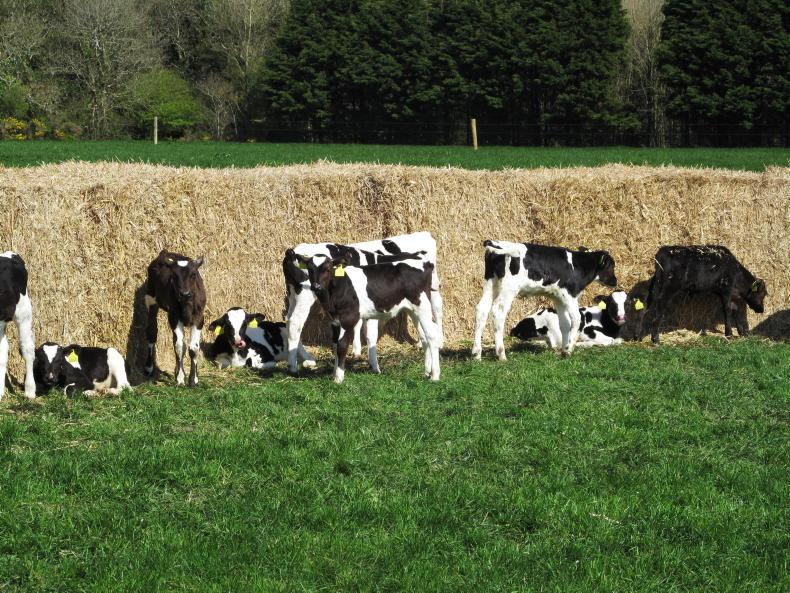
Big square bales of straw can be used as shelter for newly turned-out calves.
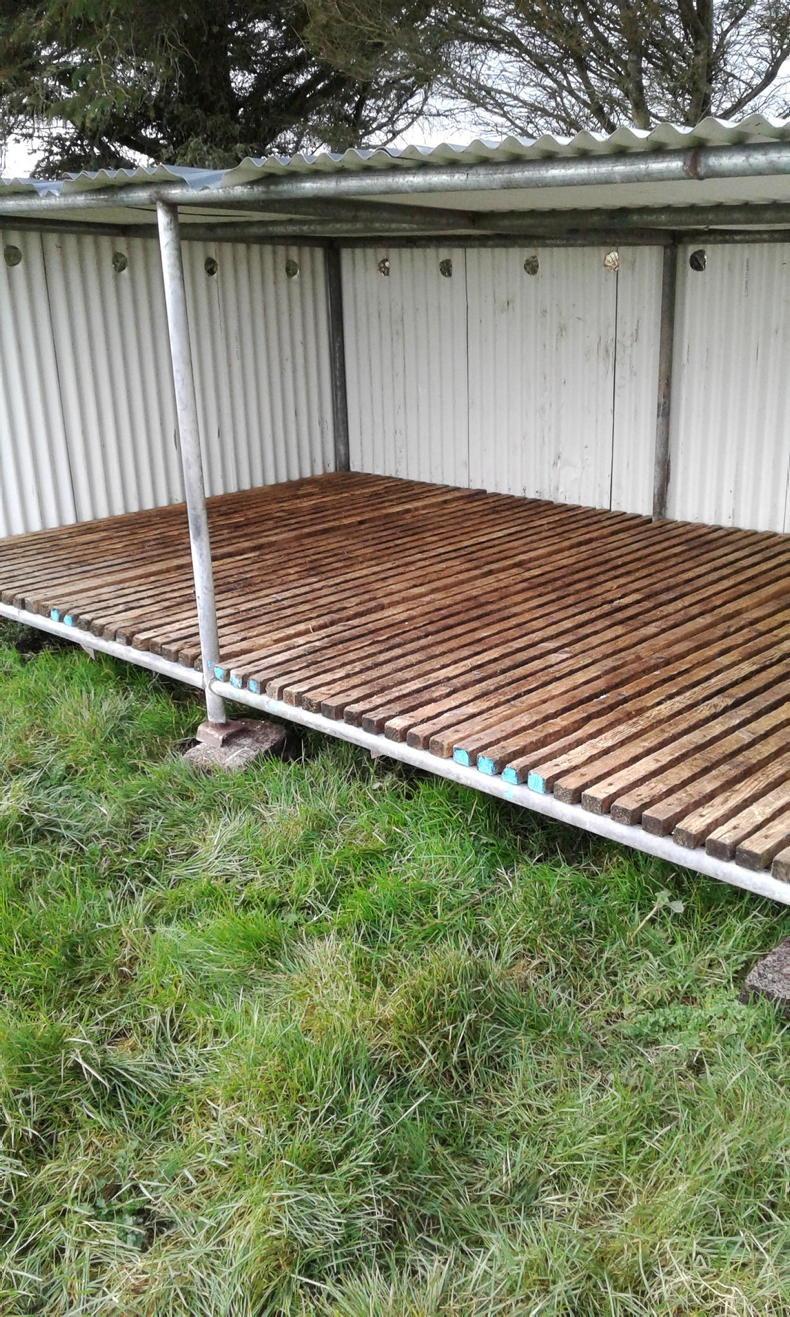
Portable calf shelters that can be moved from paddock to paddock can work well.
Sheltered paddocks with adequate dry areas to lie should be used, with some farmers opting to use large straw bales or a purpose-built shelter (see pics) to create adequate shelter.
An option for some farmers will be to allow calves free access between the paddock and the calf-rearing shed, which is probably the ideal scenario for the first number of weeks.
Early-born calves across most farms will have moved on to once-a-day feeding, making it a good time to transition calves to outside.
Turning calves out to grass while still on milk will help reduce dietary upsets, as well as reducing labour through bedding and cleaning out, while also reducing disease pressure on calf houses that have been in use for two months at this point.
Similar to indoor rearing, calves should have access to clean water at all times.
Feeding
Concentrates should be provided, ideally in a creep feeder, although feeding in a trough morning and evening is acceptable.
To ease the transition and add additional fibre to the diet, roughage in the form of hay or straw should be provided in feeders.
Later on in the season, the addition of roughage while calves are grazing low, leafy swards will help in preventing summer scours.
Milk replacer will have to be fed using either a mobile feeder pulled behind a quad or farm jeep, or a milk cart can be used and the calves fed in the teat feeders used inside.
The latter will reduce the number of calves that can be kept in one group.
Shelter
Paddocks close to the yard should be selected for ease of management and to allow frequent checking.

Big square bales of straw can be used as shelter for newly turned-out calves.

Portable calf shelters that can be moved from paddock to paddock can work well.
Sheltered paddocks with adequate dry areas to lie should be used, with some farmers opting to use large straw bales or a purpose-built shelter (see pics) to create adequate shelter.
An option for some farmers will be to allow calves free access between the paddock and the calf-rearing shed, which is probably the ideal scenario for the first number of weeks.







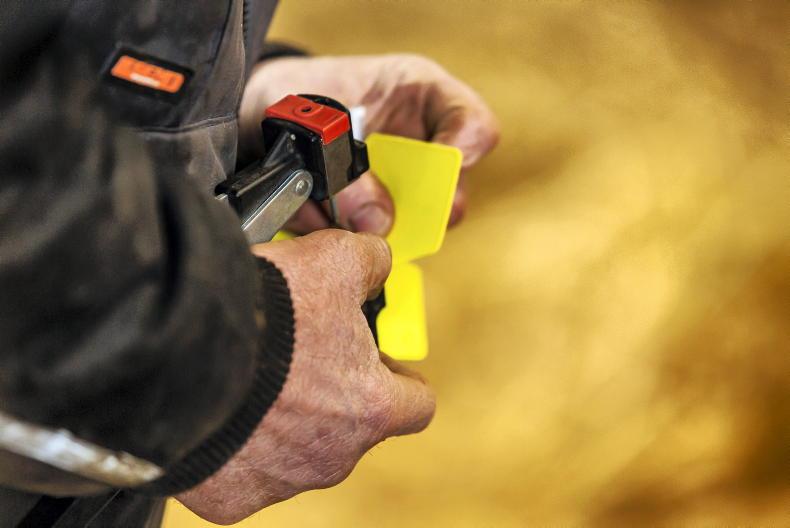

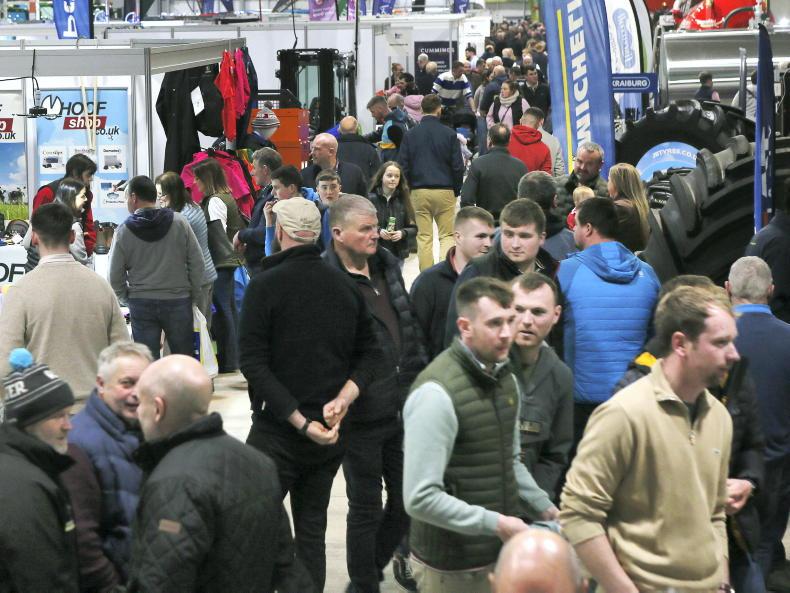
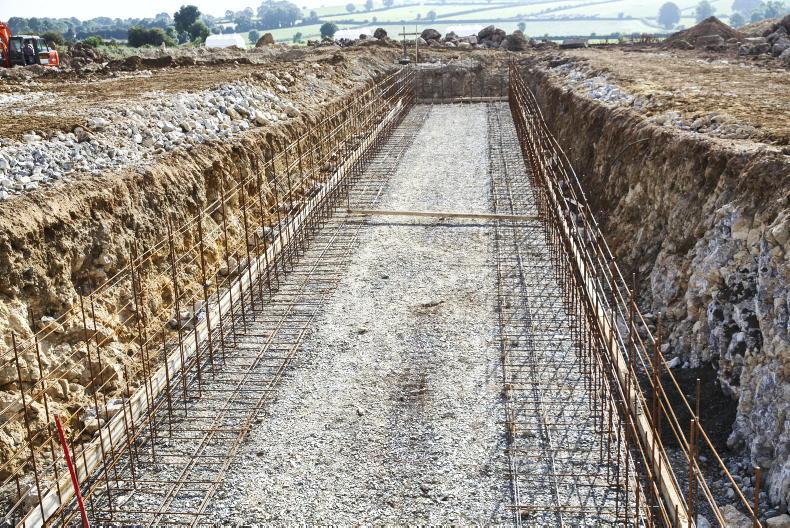

SHARING OPTIONS